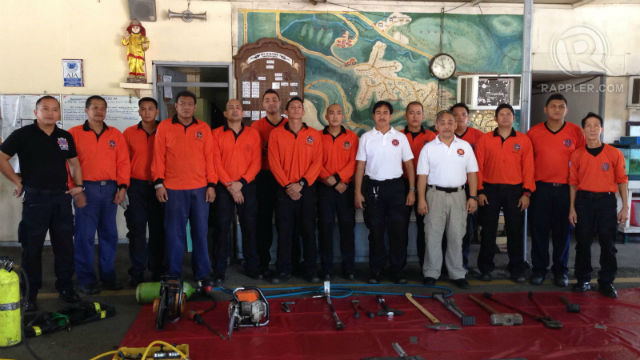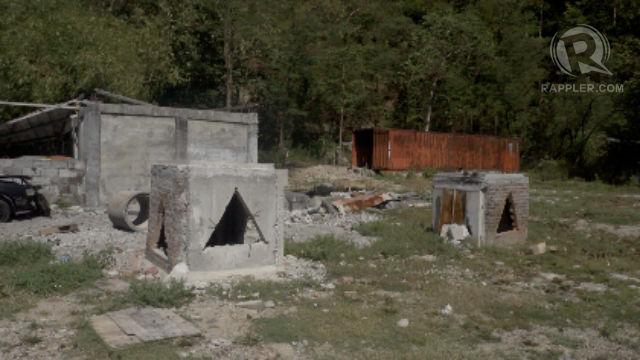SUMMARY
This is AI generated summarization, which may have errors. For context, always refer to the full article.

SUBIC BAY, Philippines – Disaster responders are at the forefront of any calamity. But, of the hundreds of disaster teams in the country, there is one team that stands out.
The Subic Bay Metropolitan Area (SBMA) Fire and Rescue team is one of the country’s best Search and Resuce (SAR) teams.
Last October 2013, the team received the highest honor in the Urban Search and Rescue category of Gawad Kalasag, the premier national disaster management recognition program. They won the same award in 2009.
For the members of the SBMA Fire and Rescue team, risking their lives to save others is all part of a day’s work.
Always ready
SBMA fire chief Ranny Magno said the team is always ready to respond to any kind of disaster. The team can also be mobilized within 24 hours and is ready to travel to anywhere in the world.
“With one call, I can send one team. If it’s a flooding or landslide or fire, we can send (the team) anytime,” Magno said.
Composed of 130 responders divided among 7 fire stations, the team has regular drills to upgrade their search and rescue skills. They train in a multi-hazard, multi-risk scenario environment. Their training facility, Boton Station 4, is also used by responders from other local government units, international groups and military units to conduct their training.

Discipline and passion
Magno, who has been in the fire protection service for 25 years, said finding committed people is a key factor in effective disaster response and management.
“What I can say for my team is that they have the discipline. First and foremost, you need to have the discipline and passion. If you don’t have the discipline (and) passion, you cannot really mobilize in less than 24 hours,” Magno said.
The team has been deployed to countless national and international disasters such as in Fukushima, Japan in 2012 and in the Visayas following Super Typhoon Haiyan (Yolanda).
Magno said they make sure that all their responders are well-equipped and well-trained before they are deployed. Aside from using a buddy system, every person is given complete personal protective equipment (PPE).
“Every team…has their own backpack (that can last) for 5 days. So if we (are) mobilized or dispatched for 5 days, we can do that easily. We also carry our passports so that if the Office of Civil Defense tells us to go internationally, we can go,” Magno added.
Following systems
Despite being one of the top responders in the country, the SBMA fire and rescue team know they must cooperate with other SAR teams in the event of a disaster.
Magno said the team follows the Incident Command System (ICS), a tool initiated by the Office of Civil Defense (OCD) and the National Disaster Risk Reduction and Management Council (NDRRMC) to manage on-scene, all-hazard disasters and incidents.
The ICS is able to mobilize and coordinate local responders in event of a national calamity.
“ICS is very flexible and modular. It can expand and can shrink depending on the kind of emergency. For example, if they give me the position as the safety officer, then I’ll be a safety officer. I’m not the fire chief or disaster manager. That makes ICS very simple, if you look at its principle,” Magno said.
Magno added that strict implementation of the ICS at the local level will make disaster response easier and more effective at the national level.
“The thing is we really have to institutionalize the incident command system because it is the only way we can really manage no matter how complex the incident is, like in Tacloban, Leyte and Samar…(It is a) matter of institutionalizing it and getting the support of all the national cadre in the Philippines,” he said.
The Philippine Disaster Risk Reduction and Management Act of 2010 (RA 10121) mandates that every local government unit (LGU) must have a search and rescue team that responds to every emergency in their area.

Funding for equipment
But deputy fire chief Gerardo Johnson said regular training and implementation of systems is not the only thing that adds to their team’s success. He stressed the importance of having the proper equipment.
“The SBMA are breed apart because we follow (a) certain standard. We see to it that all the equipments are in good working condition…We cannot respond to any emergency (if we don’t have) equipment,” Johnson said.
The team clean and check their equipment daily.
Johnson said the lack of proper equipment is a problem most local rescue teams face. He said more funding should be allotted for disaster response in at all levels of government.
“Even if we have the right people for the job, we still lack financial support from the national government,” Johnson said in Filipino.
He added, “Training is one good way of adapting. But if we don’t have financial support, we will not get anywhere.”
The bigger picture
Magno says stronger and more devastating typhoons can be expected due to climate change.
Both Magno and Johnson believe that mitigation is still the best way to cope with the disasters.
“Climate change is the business of everyone. We should segregate our garbage, for example, to lessen the impact of disasters,” Johnson said.
Increasing the level of public awareness on climate change and how to prepare for a disaster is the key to miniming deaths and destruction in the event of another disaster.
“If the calamity is there, responders will have a difficult time even if we’re fully trained. Even if we have the manpower and equipment, without the participation of the people, disaster response is difficult,” Johnson said.
Watch this report on the SBMA fire and rescue team.
– Rappler.com
Add a comment
How does this make you feel?
There are no comments yet. Add your comment to start the conversation.